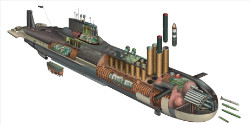Seliger
Russian Seliger Deep Sea ‘Research’ Complex
 The Russian Seliger vehicle was used for deep sea research and ‘undersea engineering’ during the Cold War.
The Russian Seliger vehicle was used for deep sea research and ‘undersea engineering’ during the Cold War.
The Soviet deep-sea research into cable cutting from submarines goes back to the mid-1960s when the ‘Archipelago’ complex was brought into service. This was a three-man diving capsule which was carried under the belly of a specially modified Project 611P ZULU Class diesel submarine, and lowered to the sea floor on a steel cable.
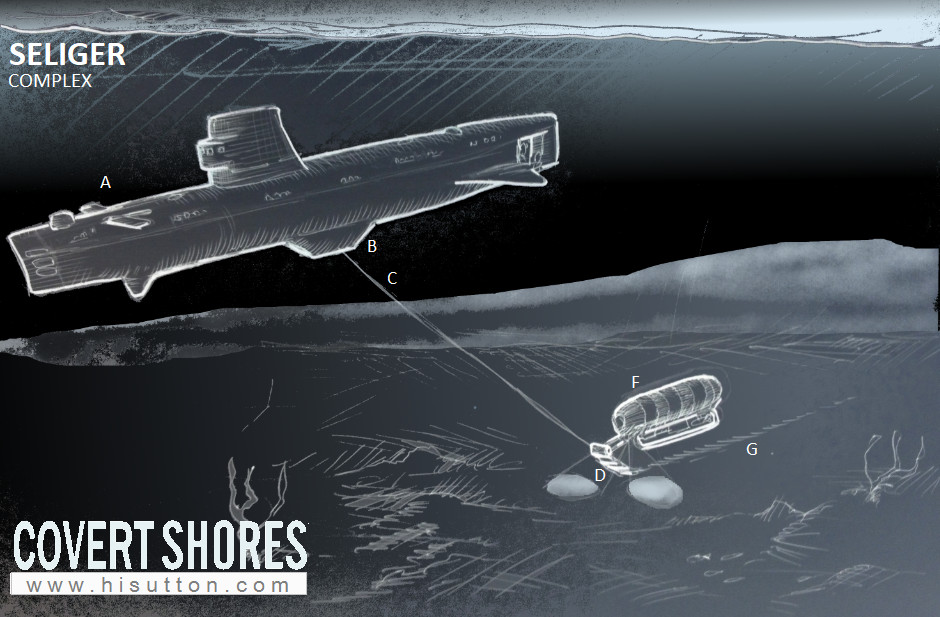
Key:
A. Pr.611P ZULU Class host submarine
B. Drop Keel to accommodate Seliger
C. Steel cable
D. Length of caterpillar track used to steer on sea floor
E. -
F. SKB-170 ‘Seliger’ diving capsule
G. Track marks left in sea floor
Archipelago was tested down to depths of 3,000m (9,850ft) where it is pitch black and extremely cold. The crew had to endure temperatures inside the capsule of 4-5 degrees Celsius (39-41 degrees Fahrenheit) while fighting sea sickness as it rocked up to 50 degrees in any direction. Once the capsule hit the bottom the pitching stopped and men found themselves in an eerie calm, completely dark and silent outside the brightly painted craft. It was slow and mentally exhausting work, and extremely dangerous.
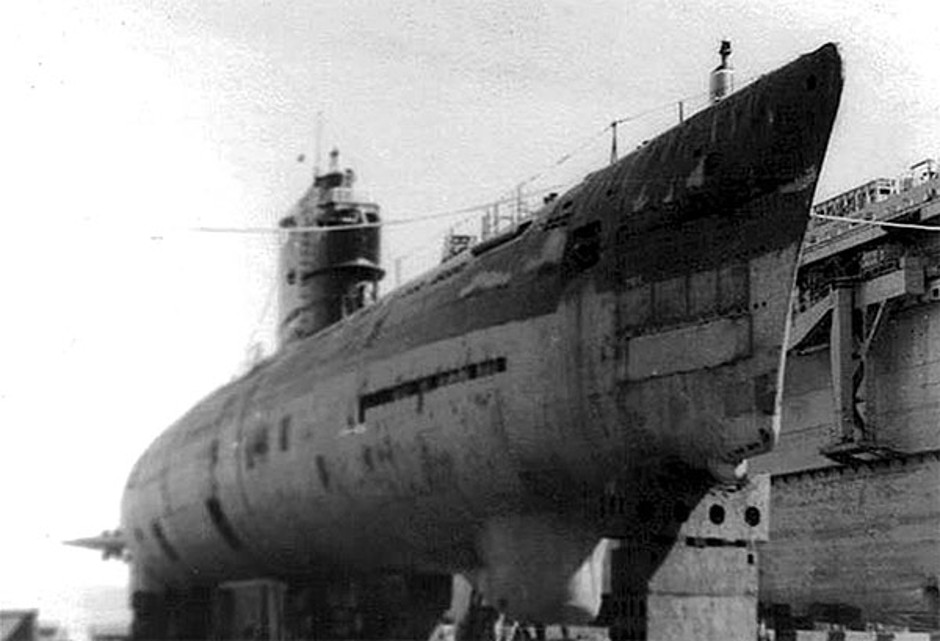
Modified ZULU Class submarine BS-69. If you look carefully you can see the drop-keel to accommodate Seliger.
Within a year of service, the Archipelago was caught in a Baltic storm while on the bottom which caused its tether to snag and the men had to be rescued. It was a close-run thing and the craft itself was lost, but it was soon replaced by three of the improved SKB-170 ‘Seliger’ complex. These had an array of chemical lamps, a porthole to peer out of and a sonar to help it grope around in the dark. There were two three-blade propulsors at one end to help it maneuver but it was still reliant on the cable to the mother submarine. A tubular frame protected the various sensors and propellers from impact with the sea floor. Inside the thick steel hull three men worked in cramped conditions on the wooden floor, with only the commander enjoying the comfort of an armchair as he surveyed the multitude of dials and gages.
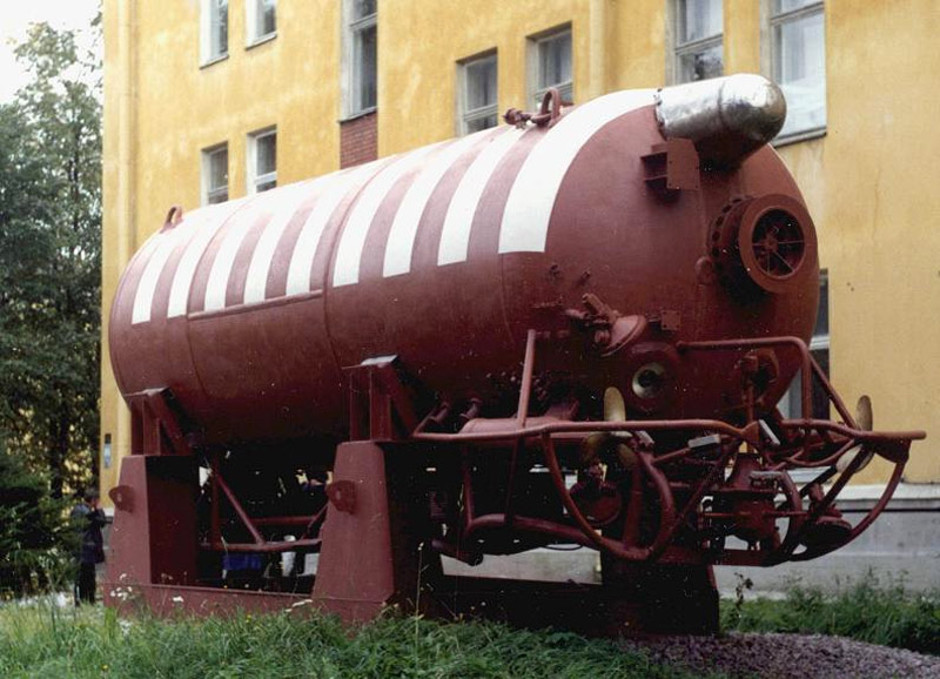
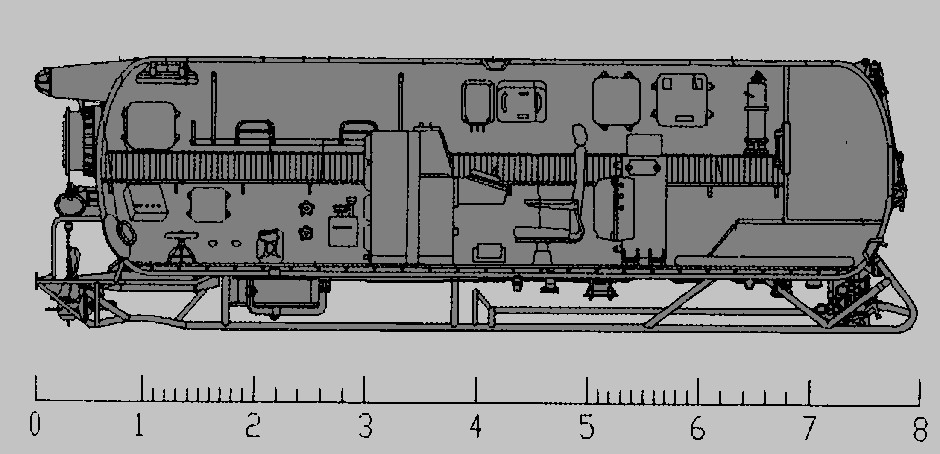
Get The essential guide to World Submarines
This Covert Shores Recognition Guide Covers over 80 classes of submarines including all types currently in service with World Navies.
Check it out on Amazon
In the 1970s two more ZULU Class boats were modified for these secret operations. The crews for these special submarines were themselves a specially formed ‘Hydronaut’ unit established at Leningrad (now St. Petersburg). It was a very elite unit separate from the Spetsnaz organization although they did share many of the attributes and much of the equipment. Candidates had to have at least five years experience in the submarine service and meet the physical and mental screening required to be a cosmonaut. The parallel with cosmonauts is interesting because the men who went into space were widely publicized and elevated by default to the status of national heroes, whereas the hydronauts remain an obscure and secretive community who operated without any press fanfare.
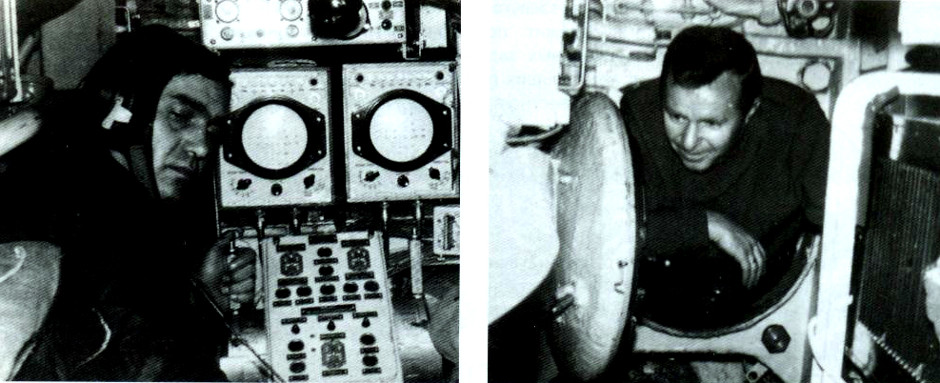
Rare photos of Hydronauts inside Seliger
Another ZULU Class submarine, BS-82, was modified in 1977-78 to help target the Seliger complex. It featured a special purpose sonar in the bow specifically for detecting undersea cables. It was retired in 1987.
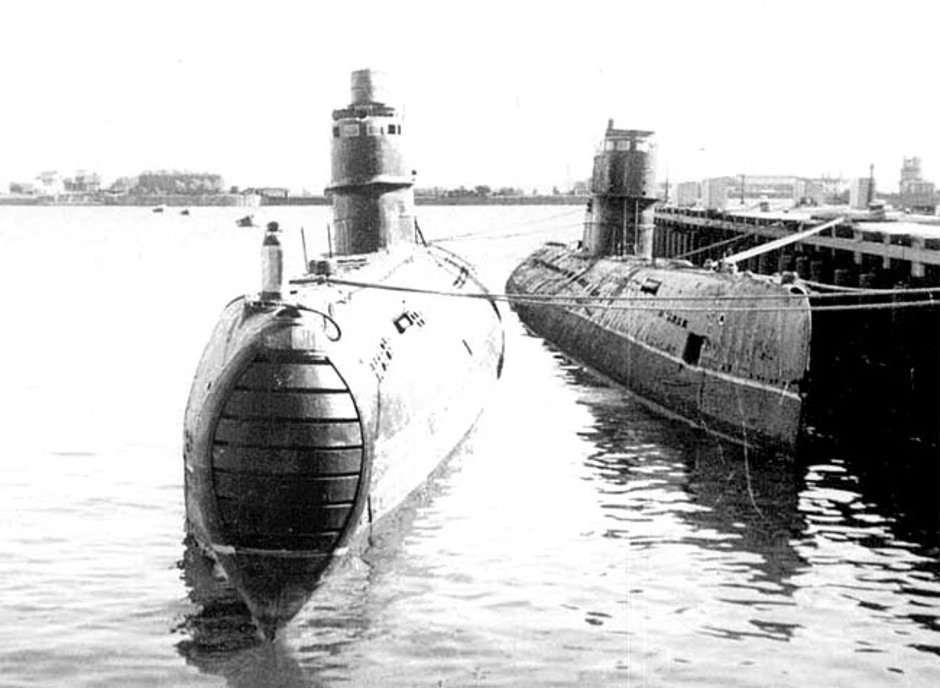
BS-82, left. Other ZULU Class right, possible one of the Seliger host submarines.
Swedish Incursions
Seliger was operated in the Baltic (as well as the North Atlantic, Mediterranean and possibly the Arctic - the host submarines were based in Kronstadt). Track-marks left by the steering device may account for some (but not all) of the Submarine Scare evidence. Activities would have included training and tests, as well as ‘research’ and possible covert operations. Seliger was not however a Special Forces transport and could not operate in shallow waters.
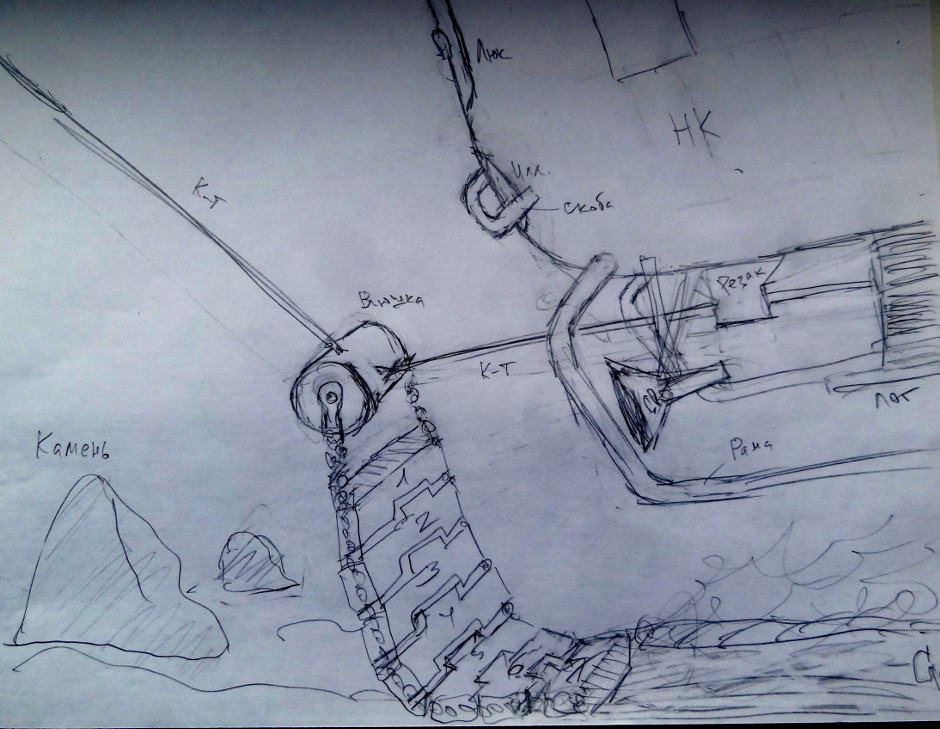
Sketch posted on a Russian military Forum showing the track.
The ultimate book of Special Forces subs Covert Shores 2nd Edition is the ONLY world history of naval Special Forces, their missions and their specialist vehicles. SEALs, SBS, COMSUBIN, Sh-13, Spetsnaz, Kampfschwimmers, Commando Hubert, 4RR and many more.
Check it out on Amazon
Related articles (Full index of popular Covert Shores articles)

 USS Jimmy Carter (SSN-23) Special Mission submarine
USS Jimmy Carter (SSN-23) Special Mission submarine

 Sweden’s nuclear powered submarine project (A-11A)
Sweden’s nuclear powered submarine project (A-11A)

 USS Parche spy sub par-excellence
USS Parche spy sub par-excellence

 BS-64 Podmoskovye Special Mission (spy) Host Submarine
BS-64 Podmoskovye Special Mission (spy) Host Submarine

 Soviet Project 1015 ‘SPLC’ Special Purpose midget submarine
Soviet Project 1015 ‘SPLC’ Special Purpose midget submarine

 Project 09852 Belgorod Special Mission submarine (spy sub)
Project 09852 Belgorod Special Mission submarine (spy sub)

 Russian unbuilt spy submarine MPS
Russian unbuilt spy submarine MPS

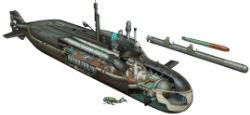 Piranha Class (LOSOS) midget sub
Piranha Class (LOSOS) midget sub

 Project 1910 UNIFORM Class deep diving spy sub
Project 1910 UNIFORM Class deep diving spy sub






